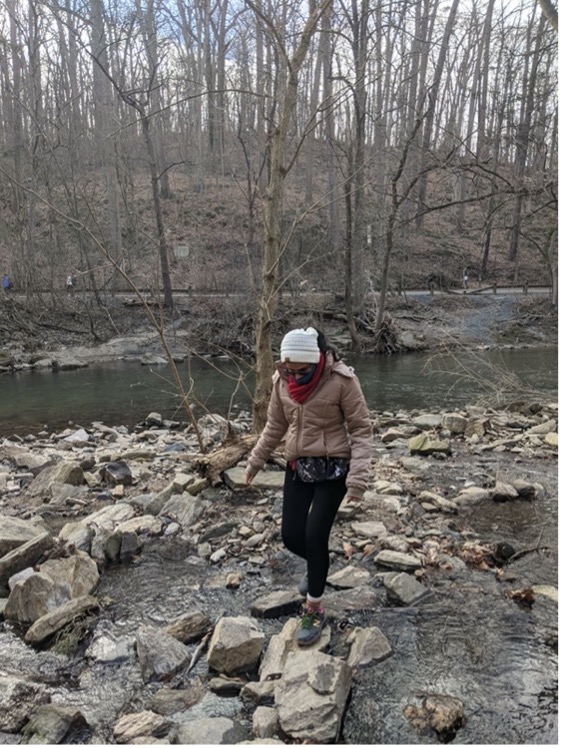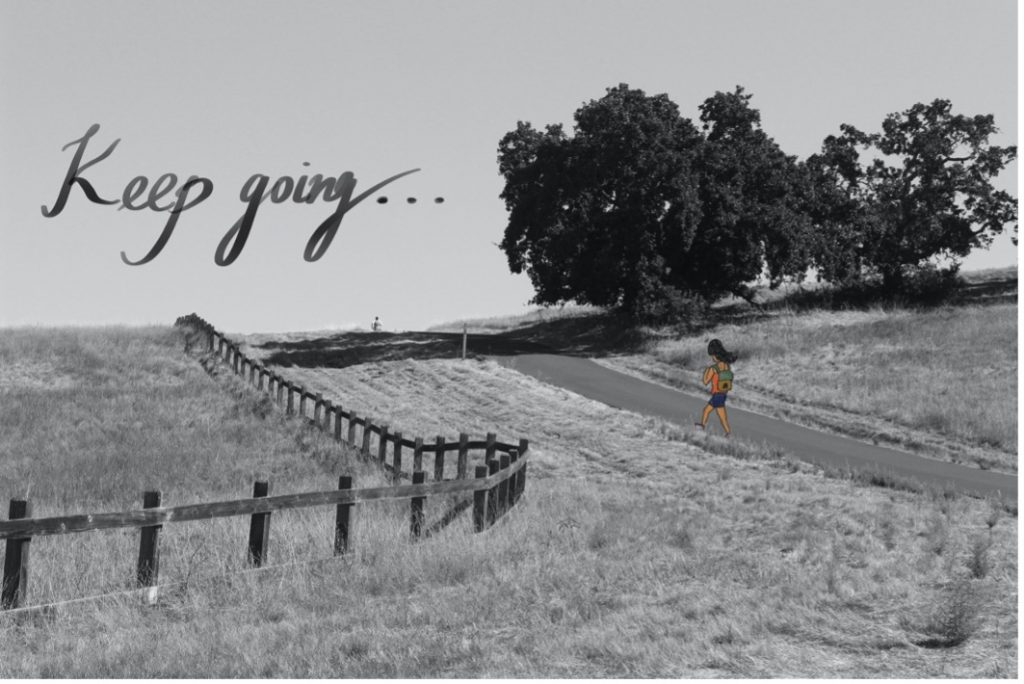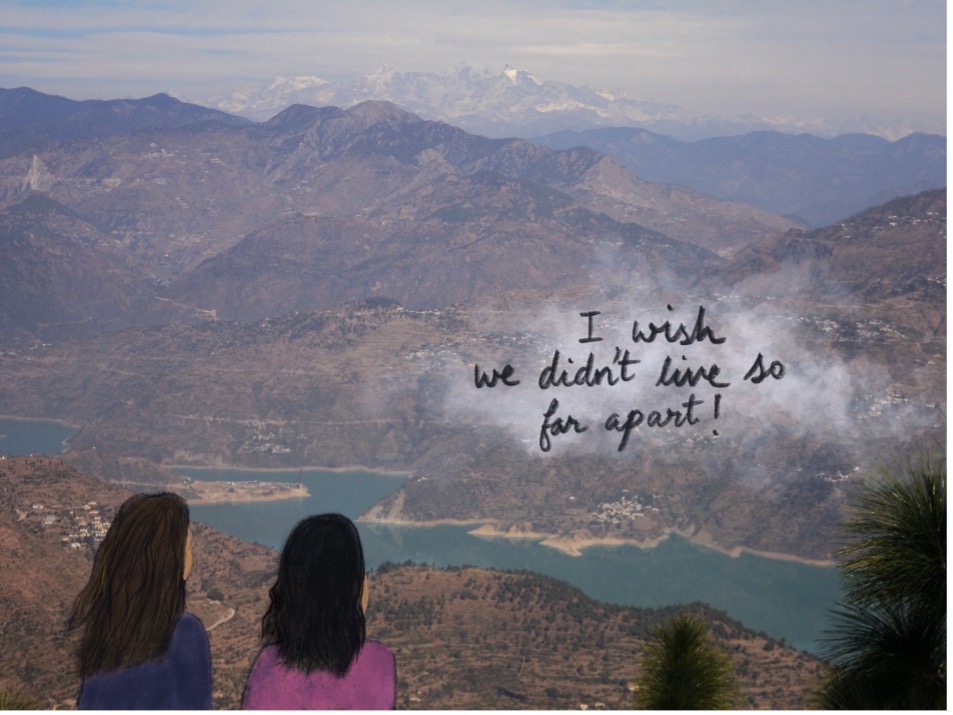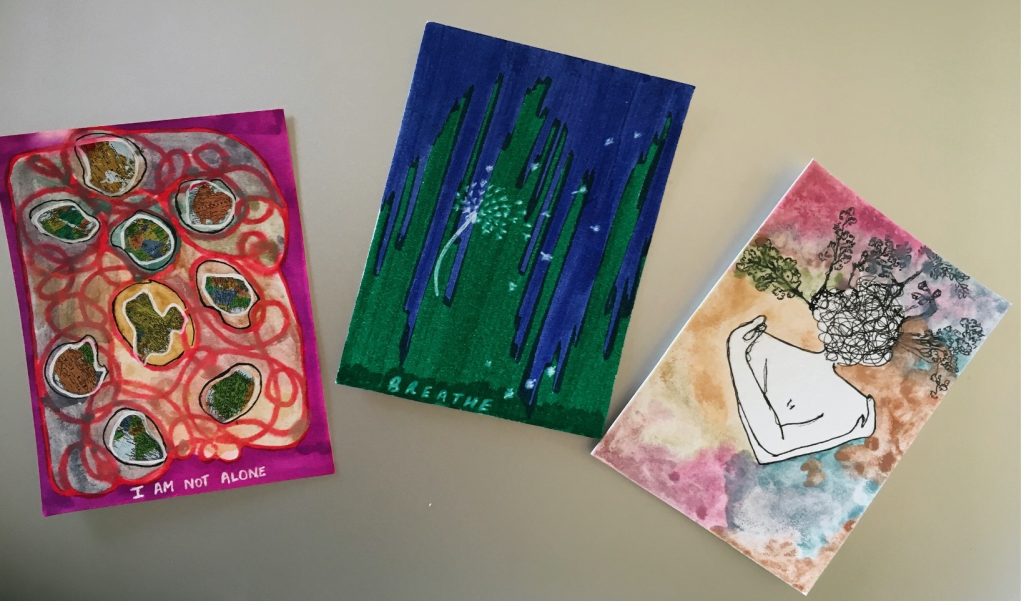January 28, 2021 | Bani Malhotra, MA, ATR
 When my Doctoral Advisor Dr. Girija Kaimal, posed the simple question, “Are you well rested?” during a meeting after the holidays to discuss an online research project started during the pandemic, I hesitantly responded, “I guess?” but asked myself in my head, “Am I really?” I realized that I was prepared to discuss a recent virtual interview that I had conducted and the tasks that I was supposed to complete, but I felt totally thrown off when she was also interested in my personal care.
When my Doctoral Advisor Dr. Girija Kaimal, posed the simple question, “Are you well rested?” during a meeting after the holidays to discuss an online research project started during the pandemic, I hesitantly responded, “I guess?” but asked myself in my head, “Am I really?” I realized that I was prepared to discuss a recent virtual interview that I had conducted and the tasks that I was supposed to complete, but I felt totally thrown off when she was also interested in my personal care.
Interpreting my confused look, she suggested I read Dr. Saundra Dalton-Smith’s recent TED article, “The 7 Types of Rest That Every Person Needs” and that I check-in with myself in each of these areas. I instantly connected to this article and decided to “memo” about it (a doctoral curse/ingredient to success as I am told).
This writing exercise really helped me reflect on how I’m managing the stress and exhaustion of coping with the pandemic, the disruptions in the world and the endless news cycle. It forced me to acknowledge the things I was doing well and to confront the areas that need more attention. I expect everyone can relate to at least one of these day-to-day stressors and more with all of us facing varieties of hardship right now. I also recognize that as mental health professionals, burnout and compassion fatigue are weighing heavily on our community of art therapists.
I’ve listed Dr. Dalton-Smith’s descriptions of her 7 types of rest and shared my own reflections on what has worked for me and where I can improve. I encourage you to try out this activity for yourself and to spend a few minutes in personal reflection.
1. Physical Rest, Active or Passive
“Passive physical rest includes sleeping and napping, while active physical rest means restorative activities such as yoga, stretching…”
While I have yet to develop the skill of napping, ensuring that I get at least 6-8 hours of uninterrupted sleep has been on top of my agenda. Biking during the summer and fall season were the perfect active physical rest for me. I heard from many friends that enrolling in online yoga or gym classes also worked for them. Since I am not comfortable with the online classes and work best at my own pace, I started jumping rope and then added surya namaskar (sun salutations) to my routine. I’ve worked my way up to doing 50 jumps and 5 rounds of sun salutations a day—all while allowing myself cheat days!
2. Mental Rest
“Schedule short breaks to occur every two hours throughout your workday; these breaks can remind you to slow down.”
Between classes, lab work, my own dissertation planning and research, and making sure I still engage in creative works and have some semblance of a personal life (staying in touch with family and friends), I am doing a lot! Sometimes I need to remind myself to do nothing. Taking mindful breaks to do nothing even for just 10 minutes is a skill that I am intentionally working towards. The “doing nothing exercise” taught to me by my theater mentor Dilip Shankar has helped immensely in learning to give myself nourishing breaks.
3. Sensory Rest
“Intentional moments of sensory deprivation can begin to undo the damage inflicted by the over-stimulating world.”
Looking out my window gives me perspective, especially when I don’t have the motivation to step out for a walk. I note a distant color on the street, the skyline sunset colors, or the changing leaves on the trees. Unsubscribing to social media notifications from my phone, or even deleting the app intermittently gives me the agency to not mindlessly engage in thumb scrolling.
Sometimes sensory rest also means compensating with or facilitating a different sense. Trying new recipes over the weekend or preparing simple, home-cooked meals during the work week gives me a break from overwhelming visual stimuli and has brought me closer to my sense of smell and taste. Another calming practice for me is the Indian skin care regimen of cleaning my face with a cotton ball soaked in rose water at least twice a week. This routine not only stimulates another sensory experience, but it also soothes my tired eyes and refreshes my skin (and takes less than 2 minutes for personal care)!

Spending time exploring a creek in Philadelphia
4. Creative Rest
“You can’t spend 40 hours a week staring at blank or jumbled surroundings and expect to feel passionate about anything, much less come up with innovative ideas.”
This one really resonated with me, as a doctoral student who is constantly expected to brainstorm ideas! Nature stimulates curiosity and discovery, and also helps me challenge my preconceived notions. For example, I recently discovered that seashells are not only found in seawater but can also be near freshwater creeks—a species referred to as mussels. Interesting, right?
Another form of creative rest that has helped me during the pandemic is making digital postcard art on my iPad. I scroll through old photos, remembering travels with friends and the spaces I miss visiting. I select a photograph I took and then use it as a background to create art. Each image takes me about 10-15 minutes to make. What started off as doodles turned into postcards that I’m able to mail to friends as tokens of shared experiences or affirming visuals.


Quick postcard art using the digital art app Procreate
5. Emotional Rest
“Having the time and space to freely express your feelings and cut back on people pleasing.”
I struggle with being able to say that I am not okay. I also find it hard to not be available at every moment for friends and family, feeling obligated to do so. Challenging myself to be emotionally authentic to family, friends and significant others around me pushed me to draw the necessary boundaries which at times felt uncomfortable. In some instances, this meant cutting back on time spent talking, not taking on certain projects, not always being available to talk it out but rather referring acquaintances in need to a suitable mental health professional, or clearly communicating my need for a mental break. These things are really hard! The pandemic has caused many disruptions in all of our lives and emotional rest will be a continuous lesson for me in being kind and authentic to others as well as myself.
6. Social Rest
“This occurs when we fail to differentiate between those relationships that revive us from those relationships that exhaust us.”
During the pandemic, I’m surrounding myself with a smaller group of people in my bubble (even virtually) and trying to engage fully with this smaller group of friends and family. This choice has ensured that I am not exhausted but nourished by conversations with them. It has also given me the courage to socially engage at my own pace or communicate if I am uncomfortable meeting people outside this bubble during the pandemic. It is a reminder to myself that being choosy is okay!
7. Spiritual Rest
“The ability to connect beyond the physical and mental and feel a deep sense of belonging, love, acceptance and purpose.”
Making meditation and meditative actions as part of daily routine is an ongoing learning process for me. The community card exchange started by art therapist Gretchen Miller during the pandemic really gave me a sense of connectedness and the strength to create smaller art pieces for 3 unknown artists/art therapists within and outside the US. I also received cards in exchange which provided me comfort, love, and meaningful messages and affirmations to cope with the stress of everyday life, and the highs and lows of the pandemic.

Art cards made for the Artist Trading Card Exchange
This simple activity prompted by Dr. Kaimal’s question to me about being well rested has given me an opportunity to reexamine my routines and expectations. I’m about a month into this journey and, so far, I have found that clearly delineating the types of rests that are personally meaningful (and, more importantly, doable!) has given me more focus. I am doing better in some areas than others. For example, I am noticing that I tend to do well on physical and sensory rests but continue to struggle with mental breaks and being emotionally authentic. Overall, I am realizing that I am kinder to myself and constantly checking myself to make sure I don’t fall into what Dr. Dalton-Smith calls “a culture of high-achieving, high-producing, chronically tired and chronically burned-out individuals!”
Bani Malhotra, MA, ATR
 Bani is an International art therapist and a doctoral candidate at Drexel University’s Creative Arts Therapies department. She is a research fellow in Dr. Girija Kaimal’s Health, Arts, Learning and Evaluation (HALE) Lab working on art therapy projects related to hematology/oncology, veterans with Gulf War Illness, and the use of traditional artforms in art therapy. Bani is currently working towards pursuing her dissertation on art therapy with individuals who have burn injuries.
Bani is an International art therapist and a doctoral candidate at Drexel University’s Creative Arts Therapies department. She is a research fellow in Dr. Girija Kaimal’s Health, Arts, Learning and Evaluation (HALE) Lab working on art therapy projects related to hematology/oncology, veterans with Gulf War Illness, and the use of traditional artforms in art therapy. Bani is currently working towards pursuing her dissertation on art therapy with individuals who have burn injuries.
